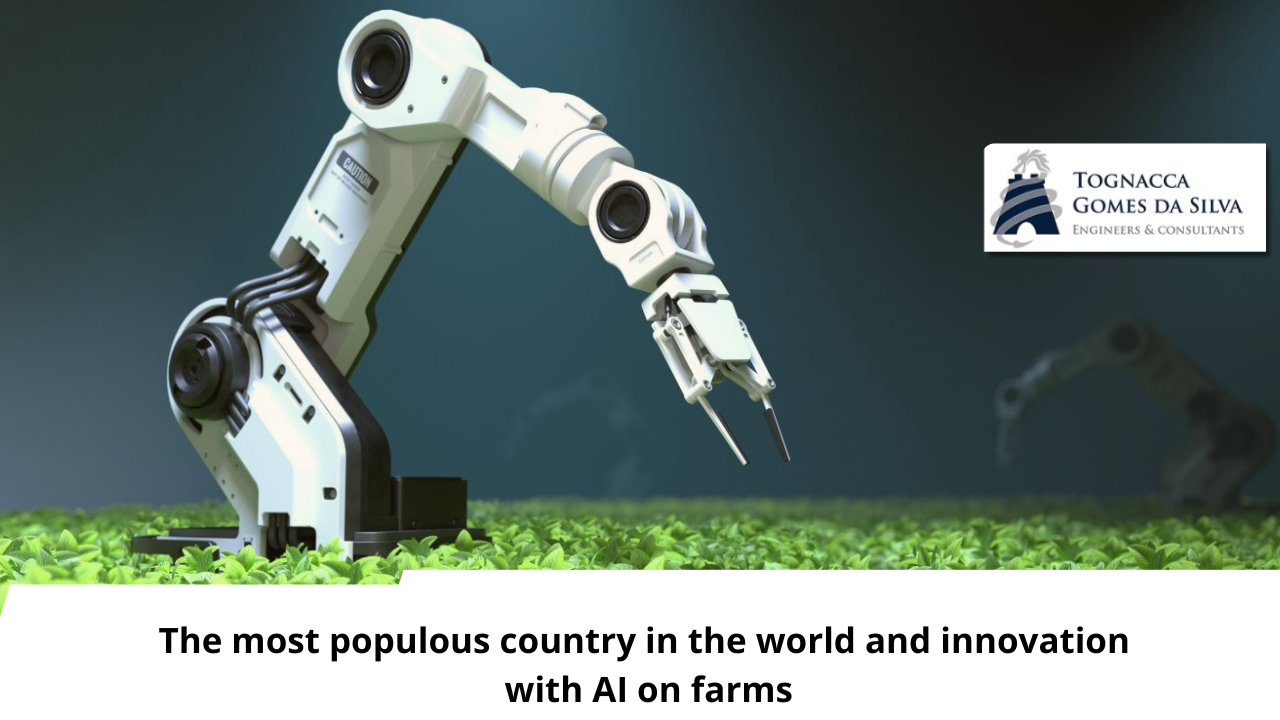India has become a reference in agritech through innovation with AI on farms
India is the most populous country in the world, with a population of 1.4 billion people. It is one of the world’s largest producers of sugar, wheat, corn, rice, cotton, fruits, spices and fertilizers. This is what the “State of World Population Report, 2023” from the United Nations Population Fund indicated.
To give you an idea, its gross domestic product for 2024 is estimated at US$4.1 trillion, with annual growth of around 6%. It is almost double Brazil’s GDP in 2023, which was US$2.13 trillion.
The country, despite being the fourth largest agricultural producer in the world, still faces several challenges due to the size of its territory. However, some solutions are being implemented, such as the adoption of new agricultural technologies based on artificial intelligence (AI).
Artificial intelligence to increase productivity and feed the population
An example of innovation with AI on farms is the “Saagu Baagu” pilot project. The government of Telangana, a state in the south of the immense country, launched the project in 2021. This happened in collaboration with rural extension organizations and technology companies. This program benefited 7,000 pepper farmers by providing AI tools to increase productivity. This resulted in significant advances in terms of production volume and agritech adoption.
In less than three years, the initiative has implemented several solutions to help farmers. A partnership established by Digital Green and Glific developed a virtual assistant on WhatsApp. This assistant offers farmers guidance on the growth stage of their crops.
Another measure of support for the program came from agtech KrishiTantra, which established soil analysis centers equipped with machine learning technology. This innovation has streamlined land assessment, providing farmers with quick insights into soil quality and fertilizer recommendations.
Computer vision fighting waste
Startup AgNext implemented a computer vision system to assess the quality of peppers in the field, allowing farmers to identify defects and determine attributes such as color, shape and size. This increased the value of the harvest and reduced waste.
These on-farm AI innovation tools were tested in an 18-month pilot program spanning three consecutive planting cycles. Farmers saw an absurd 21% increase in productivity, in addition to a 9% reduction in the use of pesticides and 5% in fertilizers.
Sales prices increased by 8%, according to the World Economic Forum. Thus, the Telangana government expanded the program to another 500,000 farmers, based on the positive results. The success of AI innovation in Saagu Baagu’s Indian farms signals a promising future with more investment in this sector, development and increased productivity.
Challenges and benefits of AI
AI-based technologies offer solutions to various challenges faced by farmers, such as planting planning, monitoring crop health, and pest prediction, resulting in more accurate productivity estimates.
In this sense, innovation with AI on farms represents advances, increases harvest efficiency and promotes sustainable agricultural practices, reducing the excessive use of resources such as water, fertilizers and pesticides.
Apart from the Saagu Baagu program in Telangana, similar initiatives are being replicated in other parts of India. For example, in neighboring Andhra Pradesh, Microsoft is sending AI-based text messages to farmers, resulting in a 30% increase in crop productivity.
Furthermore, the partnership between Microsoft and United Phosphorous, UPL – one of the main global fertilizer companies, with a branch in Brazil – resulted in the creation of the Pest Risk Prediction API, which uses AI to anticipate pest attacks and minimize damage to crops.
Another highlight is in Karnataka, the neighboring state of Telangana, where the government employs AI to predict the prices of agricultural commodities, allowing farmers to make informed choices about selling their products.
Growing innovation with AI on farms
These examples highlight the growing innovation with AI on farms, demonstrating its ability to address critical challenges faced by farmers in developing countries, while promoting sustainable and profitable agricultural practices globally.
In short, India, being the most populous country in the world, stands out in agritechnology through implementing AI on its farms. The “Saagu Baagu” pilot program exemplifies this initiative, resulting in significant advances in agricultural productivity and the adoption of sustainable practices.
Ultimately, collaboration between government, organizations and technology companies has provided notable results, such as increased harvest efficiency, reduced resource use and pest prediction, highlighting the potential of AI to address agricultural challenges and promote sustainable development throughout the world.
( source: bruna oliveira/ digital agro )



